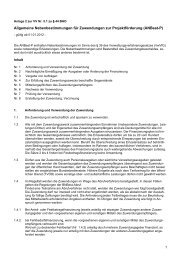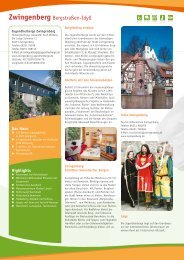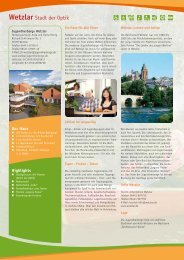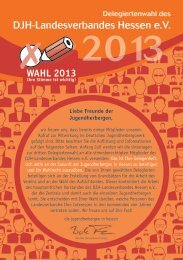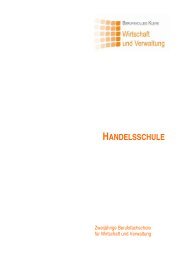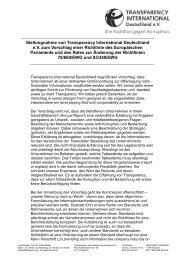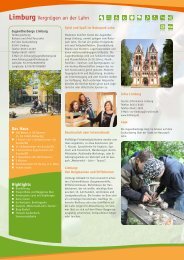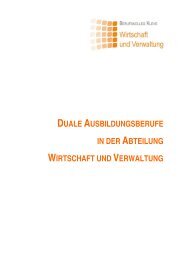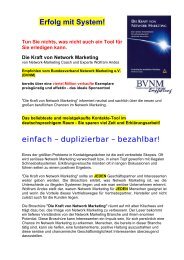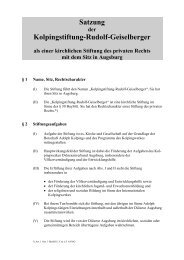REPA Booklet - Stop Epa
REPA Booklet - Stop Epa
REPA Booklet - Stop Epa
You also want an ePaper? Increase the reach of your titles
YUMPU automatically turns print PDFs into web optimized ePapers that Google loves.
2<br />
The<br />
Lomé Convention<br />
Did the same Lomé arrangements operate continuously from 1975 to 1999?<br />
The original Lomé Convention was renegotiated three times. Lomé I, II and III each ran for 5 years. Lomé IV<br />
was for 10 years, with a mid-term review. The focus and priorities varied according to Europe’s development<br />
thinking and foreign policy interests at the time:<br />
“Lomé was<br />
unrealistic, but<br />
not for the<br />
reasons<br />
advanced by the<br />
Green Paper. It<br />
was unrealistic<br />
because it<br />
expected<br />
countries to<br />
diversify, etc.<br />
within a<br />
framework<br />
through which …<br />
Europe sought<br />
to retain these<br />
countries as<br />
providers of raw<br />
materials and<br />
overseas<br />
markets.”<br />
(Tetteh Hormeku,<br />
TWN-Africa, 1998)<br />
Lomé I (1975-1980) was primarily concerned with non-reciprocal preferential trade arrangements.<br />
Lomé II (1980-1985) continued the focus on industrial development.<br />
Lomé III (1985-1990) shifted the focus from industrialisation to self-sufficiency and food security.<br />
Lomé IV (1990-1999) reflected the post-Cold War focus on a market economy, human rights, democracy and<br />
the rule of law. It also required the negotiation of a post-Lomé agreement to begin in September 1998.<br />
Were the Lomé Conventions underpinned by a particular economic ideology?<br />
It became more market-driven over time. In Lomé IV, especially after the mid-term revision in 1995, there was<br />
a move away from treating aid as the main instrument of ‘development cooperation’ to focus instead on trade.<br />
This reflected the European Union’s post-Cold War agenda as it faced the challenges of reintegrating Europe<br />
and the priorities set down in the Maastricht Treaty that established the European Union; to promote economic<br />
development and fight poverty through the ‘gradual integration of developing countries into the global economy’,<br />
economic liberalisation, improved commercial competitiveness, trade and investment agreements and ‘aid<br />
effectiveness’. Even then, Lomé IV stopped short of requiring the ACP to embrace neoliberal globalisation in<br />
return for preferences from the European Union.<br />
Did the negotiations for a post-Lomé Agreement begin in September 1998?<br />
Yes and they lasted for two years. The new Cotonou Agreement was signed in 2000 and set in train the current<br />
negotiations for Economic Partnership Agreements. Under Cotonou, this process must be completed by the<br />
end of 2007, with new arrangements to begin on 1 January 2008. Until then (most of) the preferences provided<br />
in the Lomé Convention continue to operate.<br />
How did/do the Lomé trade preferences operate?<br />
Under Lomé, some 99% of industrial goods from the ACP countries have unrestricted entry to the European<br />
Union, without tariffs or quotas. Agricultural products are more restricted; for example, a specific quantity (quota)<br />
of processed tuna from the Pacific Islands is allowed to enter the European Union duty (tariff) free. There are<br />
also special protocols for some agricultural products:<br />
- sugar: sugar producers can export an annual quota to the EU at guaranteed high prices that are aligned<br />
to its internal sugar price. This mainly benefits Mauritius, Fiji, Guyana and Barbados.<br />
- beef and veal: 90% of the tax normally paid on imports is refunded. This mainly benefits Southern Africa;<br />
- bananas: quotas of bananas from mainly Caribbean producers have duty free entry to EU markets.<br />
How did the political dimension of the Lomé Convention operate?<br />
The agreement established three formal mechanisms for political dialogue:<br />
- an annual ACP-EU Council of Ministers;<br />
- regular meetings of the ACP Ambassadors (in Brussels, where the European Commission is based); and<br />
- An ACP-EU Joint Assembly that meets twice a year. This is made up of Members of the European Parliament<br />
and Members of Parliament, or their delegates from the ACP’s Member States (where there is no Parliament,<br />
the State can send representatives but they must first be approved by the Assembly).<br />
What was/is the aid package from the European Union to the ACP?<br />
This is known as the European Development Fund (EDF). It had its origins in the Treaty of Rome (that created<br />
the European Common Market) in 1957, which made provision for aid to the colonies. Each allocation of the<br />
A People’s Guide To The Pacific’s Economic Partnership Agreement 13



